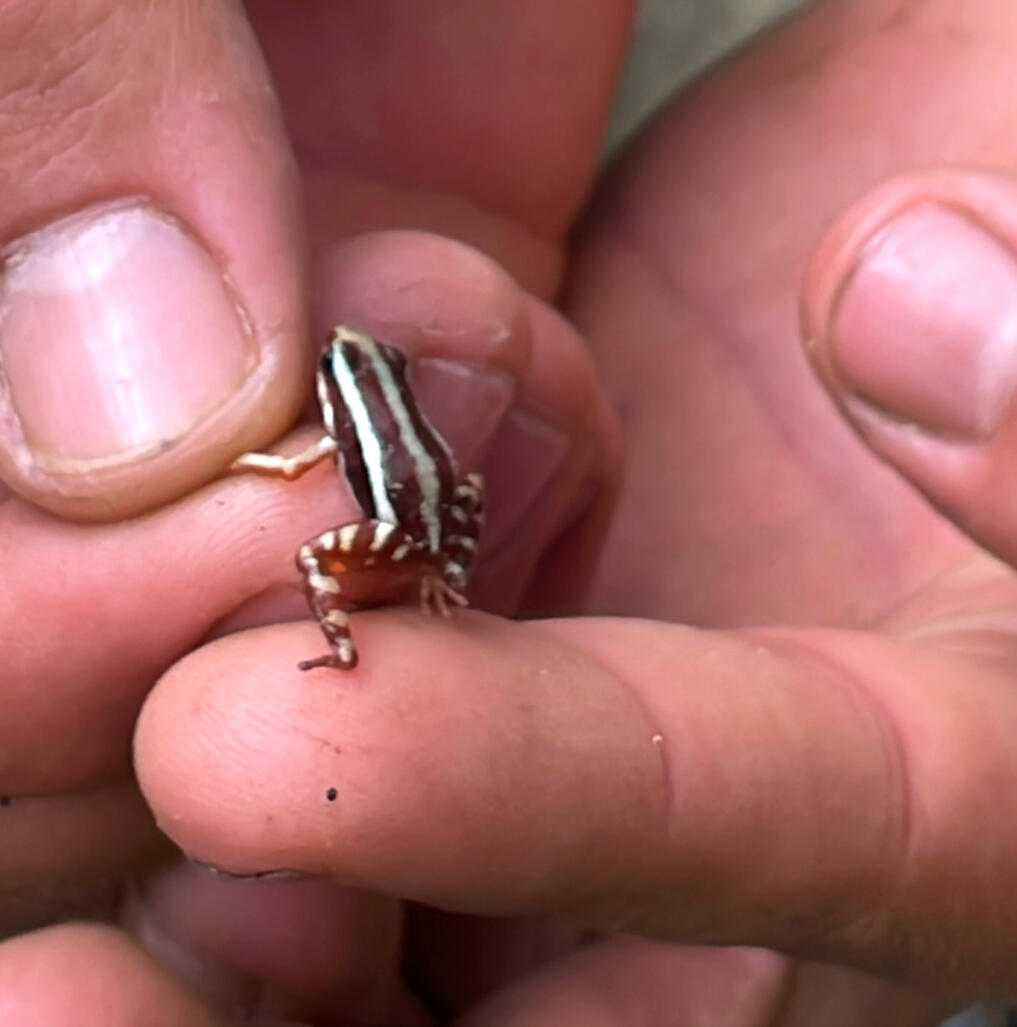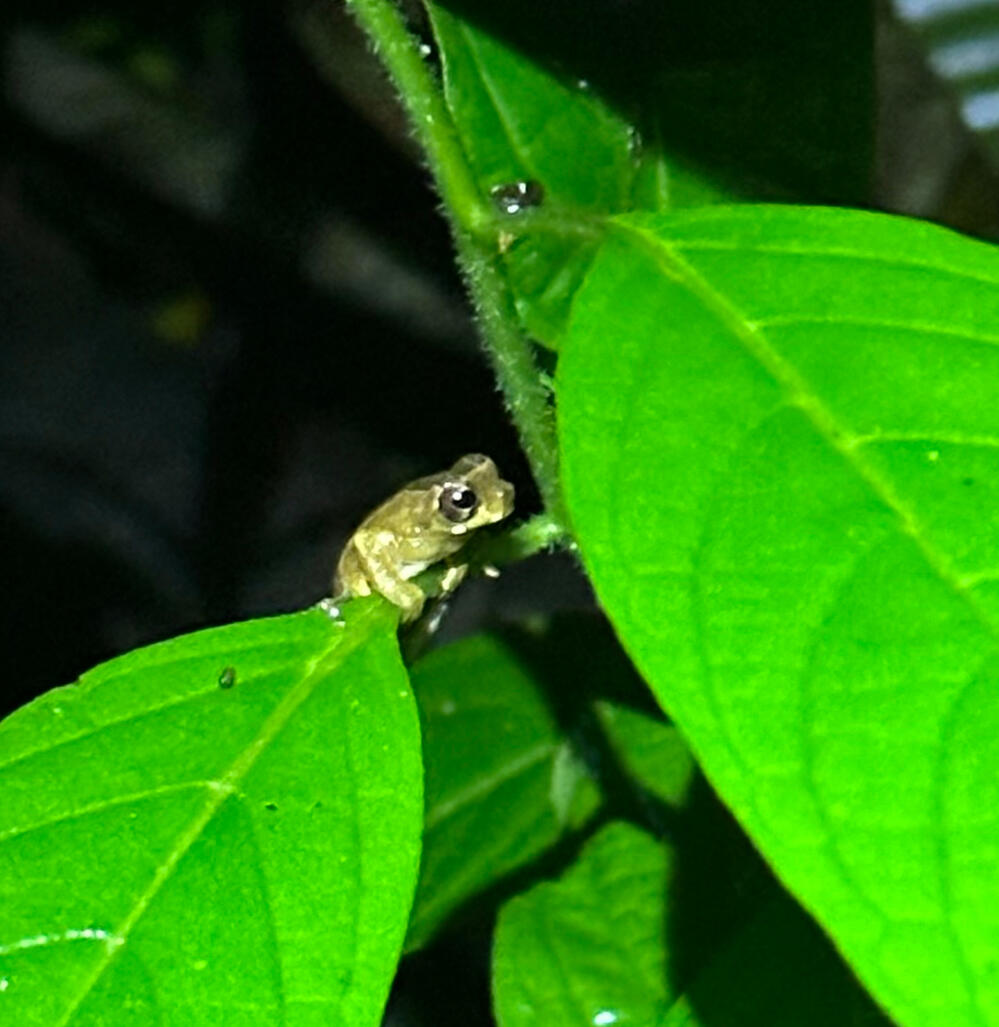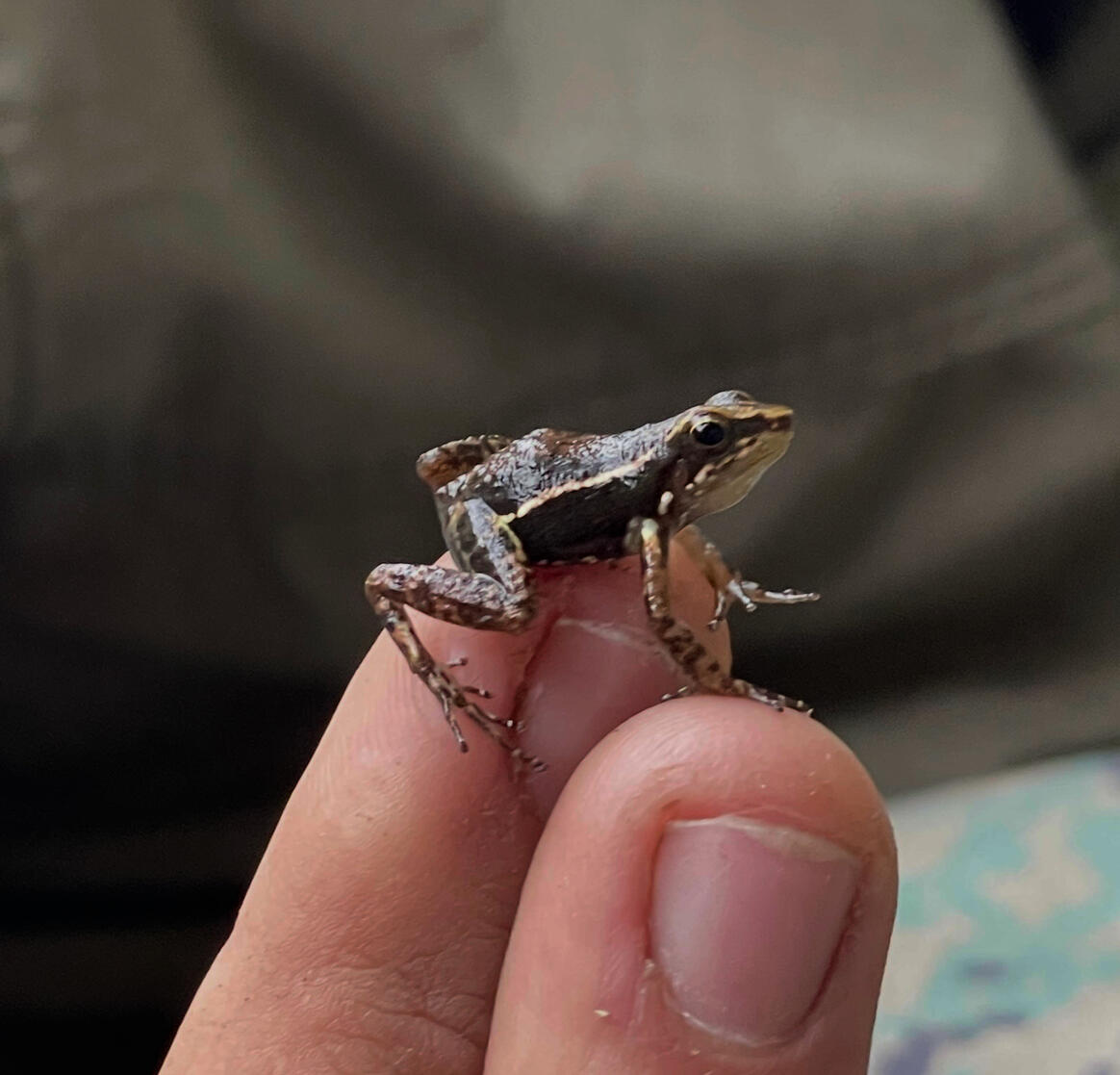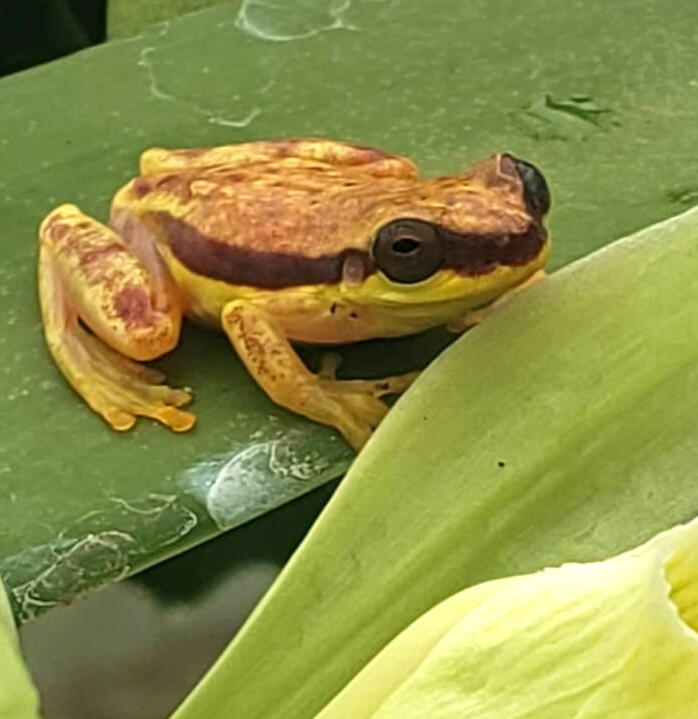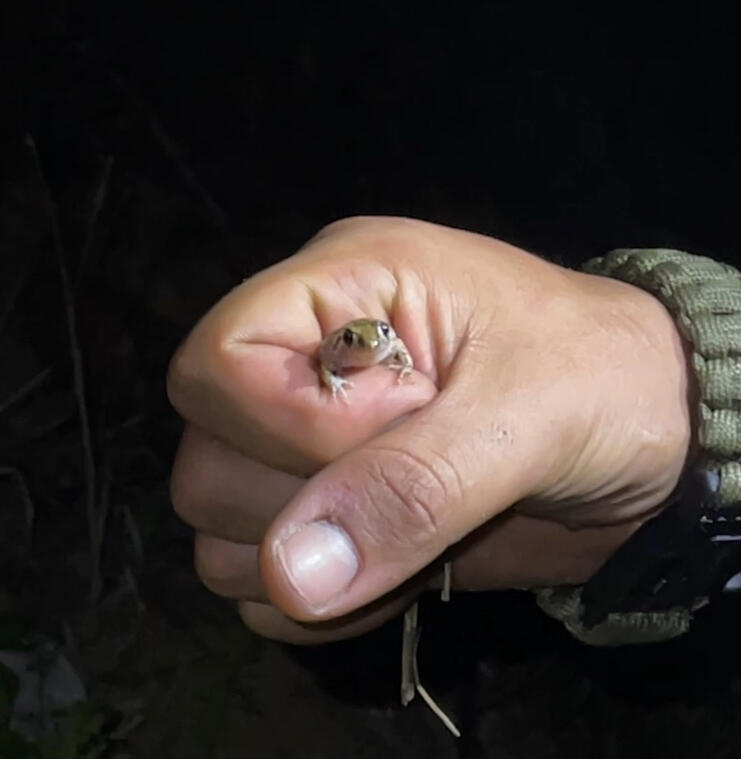Welcome
Handcrafted chocolate is not just a pleasure on the palate, it is an act of resistance: a bridge towards sustainability, conservation and biodiversity that defines Ecuador.
CHOCOLATE MAKER
Who I am
I’m Marcos, an Ecuadorian Chemical Engineer and chocolate enthusiast based in Ecuador. My dream is to encourage people to consume more and better chocolate, while also being aware of its origin, the individuals involved in the farming process, and its sustainability impact.
SUSTAINABILITY
Exploring the origin
If we want to talk about sustainability, we start by getting to know the hands that bring the “food of the gods” to us.Cacao producers play a significant role in the chocolate value chain.Their sustainable techniques enhance the flavor, preserve the “Cacao Nacional”, our national treasure and promote biodiversity.
Shop
Biodiverse Bea-to-Bar Chocolate
DIRECT & ETHICAL TRADE FROM THE FARMSOURCED & CRAFTED IN ECUADORSINGLE REGION / ORIGINVEGAN & SOY FREEDiscover how biodiversity impacts the flavor of handcrafted chocolate at its finest.
Quién soy
As an Ecuadorian Chemical Engineer, my passion for chocolate and my intention to preserve our cocoa led me to learn the secrets of its elaboration at The Hershey Company in 2023 as a Researcher.Working in one of the largest chocolate companies in the world gave me invaluable tools to closely understand the science of chocolate from the laboratory. I also met extraordinary scientists who gave me a hand to follow this path and understand chocolate as an element of transformation.
However, later I had the opportunity to participate in a mentoring program with the CREATURE CONSERVE foundation, where I began to develop and understand sustainability concepts around raw materials that are connected with the conservation of species.For that reason, I decided to return to Ecuador to create chocolate using sustainable cacao and more endemic, flavorful ingredients. By doing so, I honor our roots and find more natural ways to communicate our chocolate’s environmental consciousness to our chocolate lovers. Instead of relying on expensive certifications that smallholder producers cannot afford, we will use bioindicators, which are more accessible and allow us to showcase the ancestral indigenous practices that benefit the planet.Little by little I have also begun to understand what motivates us as human beings to consume chocolate. Are they antioxidants? Its historical value in pre-Hispanic cultures? Its exquisite palatability? Does it make us feel happy?Today, my mission is to share with Ecuadorians and the world a chocolate that goes beyond flavor: a chocolate that can be biodiverse, made close to the source and contribute to conservation.
Origin
Supporting smallholder producers not only benefits their economic well-being but also contributes to the conservation of their territories against mining, monocultures, and oil extraction.This commitment is not just a noble aspiration; it is evident in The Cacao Spirit’s commitment to using only cacao from poly-cultures. This practice not only promotes conservation but also aligns with the values that underpin our brand:
Fine & Flavor Cacao
Cacao Nacional is an Ecuadorian treasure recognized worldwide for its unique sensory profile, with floral and fruity notes. But this is not a coincidence.Also known as Fine Aroma Cacao, absorbs the aromas of fruits and flowers surrounding it. Consequently, poly-cultures that cultivate not only cacao but also tropical fruits like guavas, bananas, oranges, and vanilla produce unique flavor profiles in the beans of each crop and region.The Cacao Spirit does not use added flavors or essences to dark chocolate. Instead, we select beans from different ORIGINS across Ecuador to unveil the sensory experience of each poly-culture and higlight its biodiverse flavor.
Terroir & Chocolate
To make bean-to-bar chocolate, all we have are cacao beans and some sweetener (in our case cane sugar for its neutrality), therefore we do not depend on added flavors or essences that usually make up poor quality cacao. In addition, by exploring beans from different regions of Ecuador, we also have the opportunity to discover different aromas and unique flavors of each farm.Terroir in chocolate reflects more than just flavor—it’s the story of the land, the biodiversity of each ecosystem, and the sustainable practices behind every cacao tree. Each bar carries the distinct essence of where and how it was grown.

As the ORIGIN of cacao beans affect the final flavor, we make the distinction between the poly-cultures from which they come, recognizing the biodiversity of the region and the harvest season.Thus, we want you to feel closer than ever to Ecuadorian biodiversity, the hands that harvest it and the land from which it emerges.
Frogdiversity: Nature’s own certification
Organic cacao crops without agrochemicals or monocultures are reflected in the diversity and richness of amphibians.During our trips exploring and discovering Cacao Nacional, we worked with José Manuel, a biologist from Cuenca.
Thanks to his knowledge and passion for biodiversity, we have identified different species of amphibians in cacao farms that are preserved thanks to the work done by small local producers. Frogs are the spirit of cacao.
This is how we assure from The Cacao Spirit that the chocolate produced with these beans is ethical and responsible to the planet.
Bean-to-Bar Chocolate: biodiverse & delicious
The Cacao Spirit se encarna en la conservación de ranitas que sobreviven gracias a la actividad agroecológica de familias y pequeños productores.Therefore, we are inspired by the natural beauty of these creatures to design our line of dark chocolate 70% and amber chocolate 62% bars and reflect, of course, this diversity in the natural flavor of cacao.In collaboration with José Manuel and WIKIRI SAPOPARQUE we have collected photos of the species that we find next to cacao crops that make this chocolate possible.

Tena, Napo
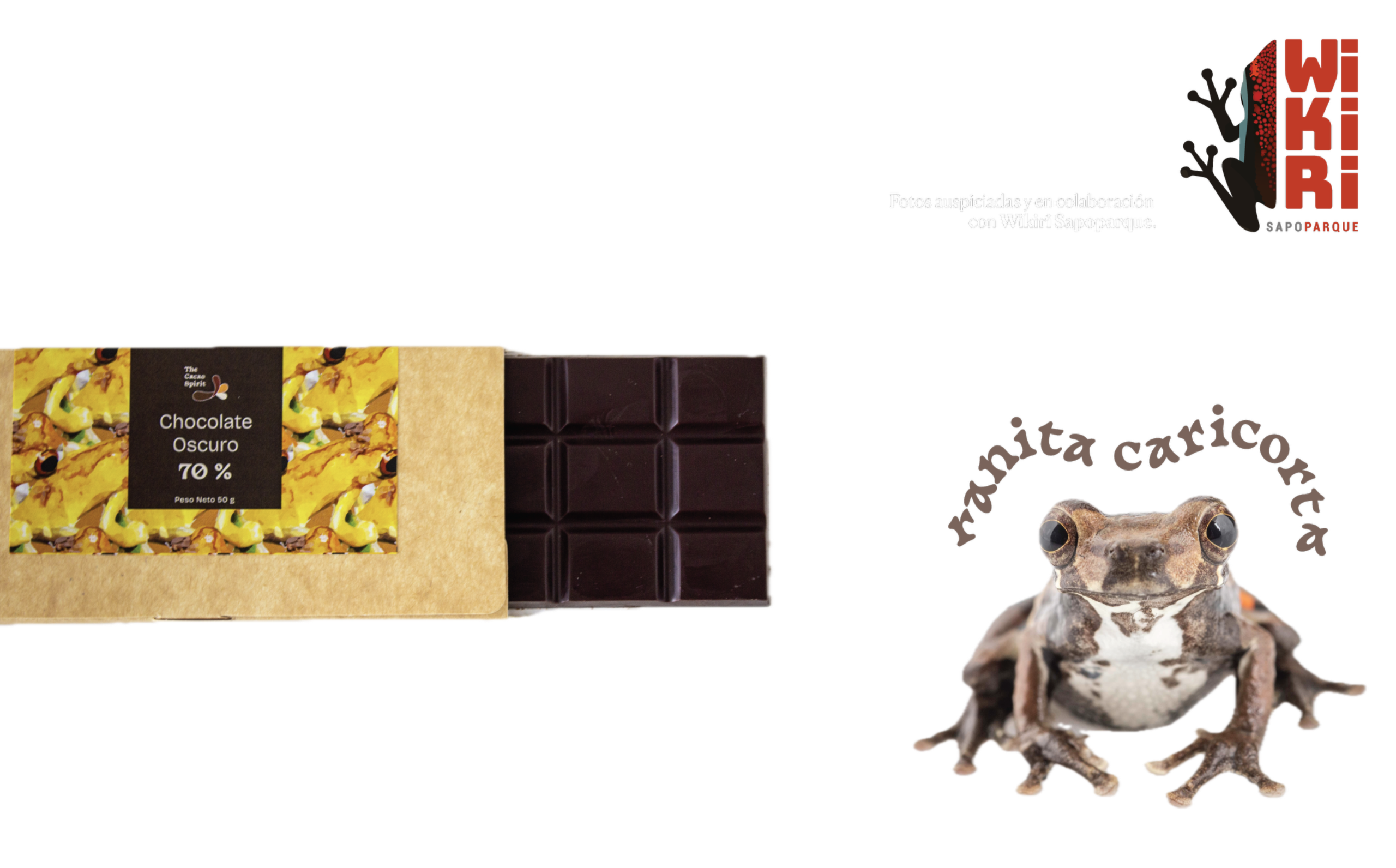
Productor: Doña Yolanda
Comunidad: Serena
Bioindicador: Ranita Caricorta (Dendropsophus parviceps)Paisaje: Este cacao proviene de una chakra en el corazón de la selva amazónica, un sistema agroforestal ancestral donde la biodiversidad florece en equilibrio. Entre yucas, papas, sacha inchi y vainilla, el cacao crece alimentado por esta rica interconexión natural.Perfil: Una acidez sutil que evoca frutos rojos como moras, mortiños y cerezas, ofreciendo una experiencia vibrante y compleja.Ingredientes: cacao, azúcar de caña, manteca de cacao.

Sarayunga, Azuay
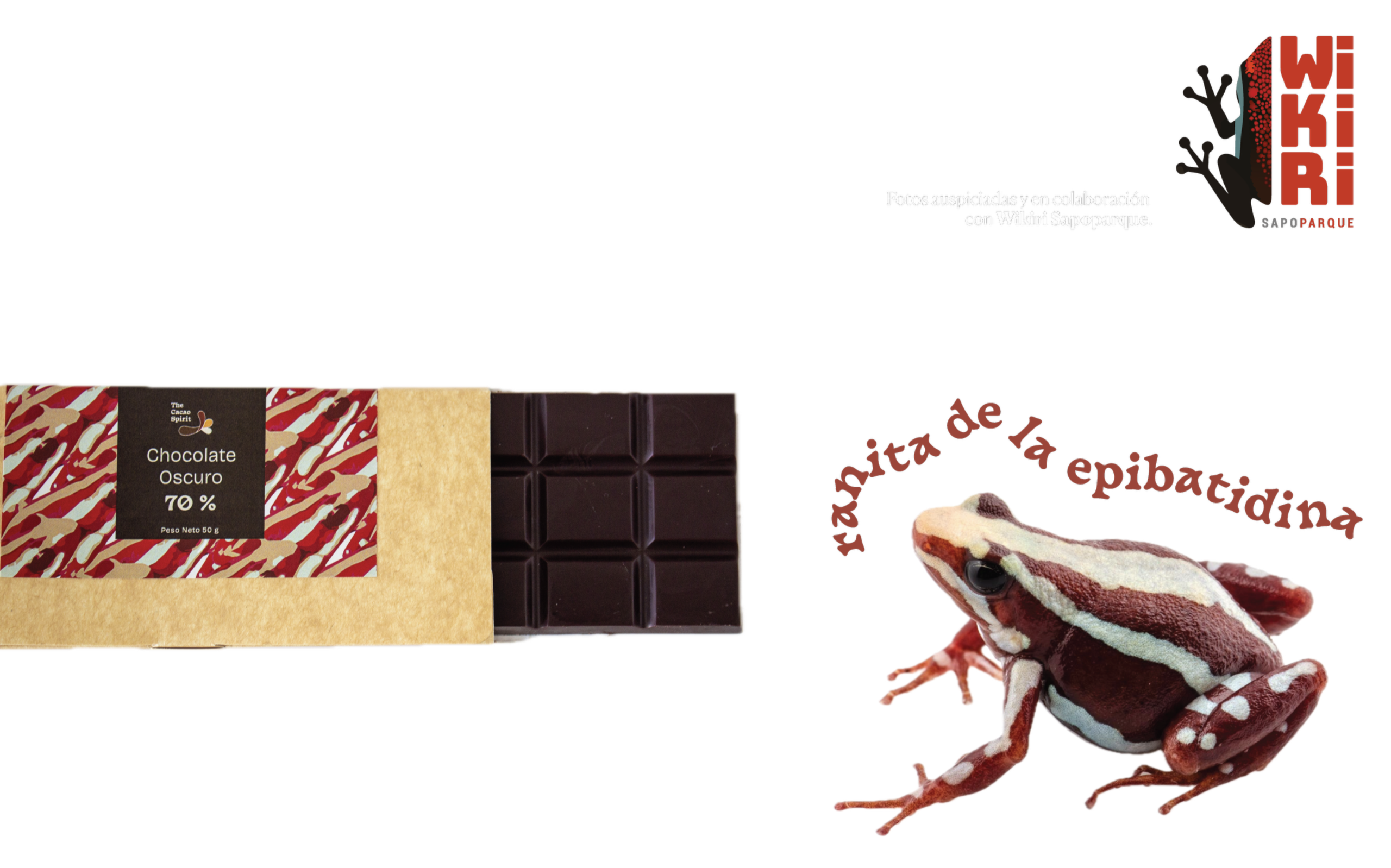
Productor: Doña Mariana
Comunidad: Chilcaplaya
Bioindicador: Ranita nodriza de la epibatidina (Epipedobates anthonyi)Paisaje: Al llegar a la comunidad de Chilcaplaya, en Sarayunga, el paisaje cambia drásticamente: desde el árido Valle de Jubones hasta un bosque verde e infinito a unos 500 metros sobre el nivel del mar. Entre la vegetación, emergen los árboles de cacao, compartiendo espacio con bananos, naranjos, mandarinos y cafetos.Perfil: Esta convivencia natural imprime en nuestro chocolate matices estacionales, donde las notas de caramelo y café destacan con suavidad, sin añadir amargura, ofreciendo un sabor cálido y equilibrado.Ingredientes: cacao, azúcar de caña, manteca de cacao.
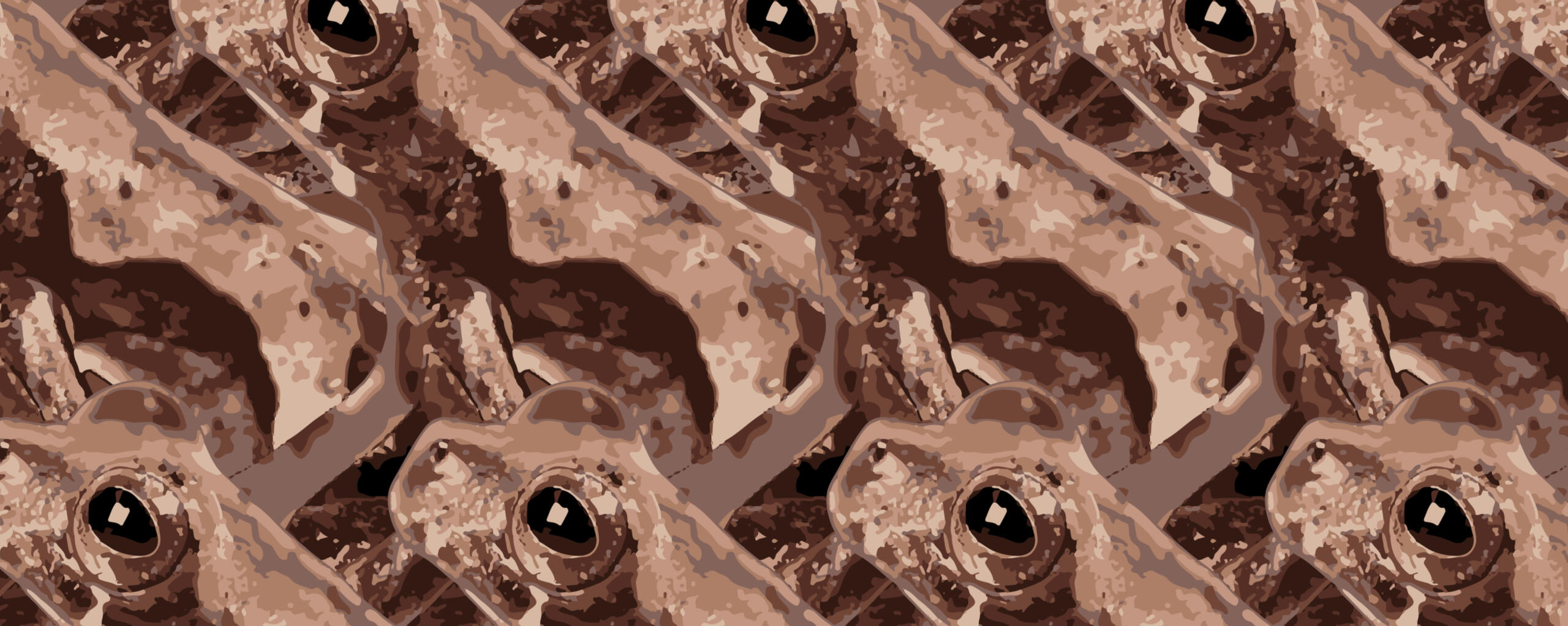
Timbara, Zamora Chinchipe

Productor: Doña Gladis
Comunidad: Podocarpus-El Cóndor
Bioindicador: Ranita cohete de Loja (Hyloxalus elachyhistus)Paisaje: Este cacao excepcional proviene de la Biósfera de Podocarpus-El Cóndor, donde crece rodeado principalmente de árboles de banano.Perfil: Esta convivencia natural impregna cada grano con un perfil aromático único con notas dulces y cremosas de banano, entrelazadas con un sutil toque de nuez moscada, creando una experiencia sensorial rica y envolvente.Ingredientes: cacao, azúcar de caña, manteca de cacao.
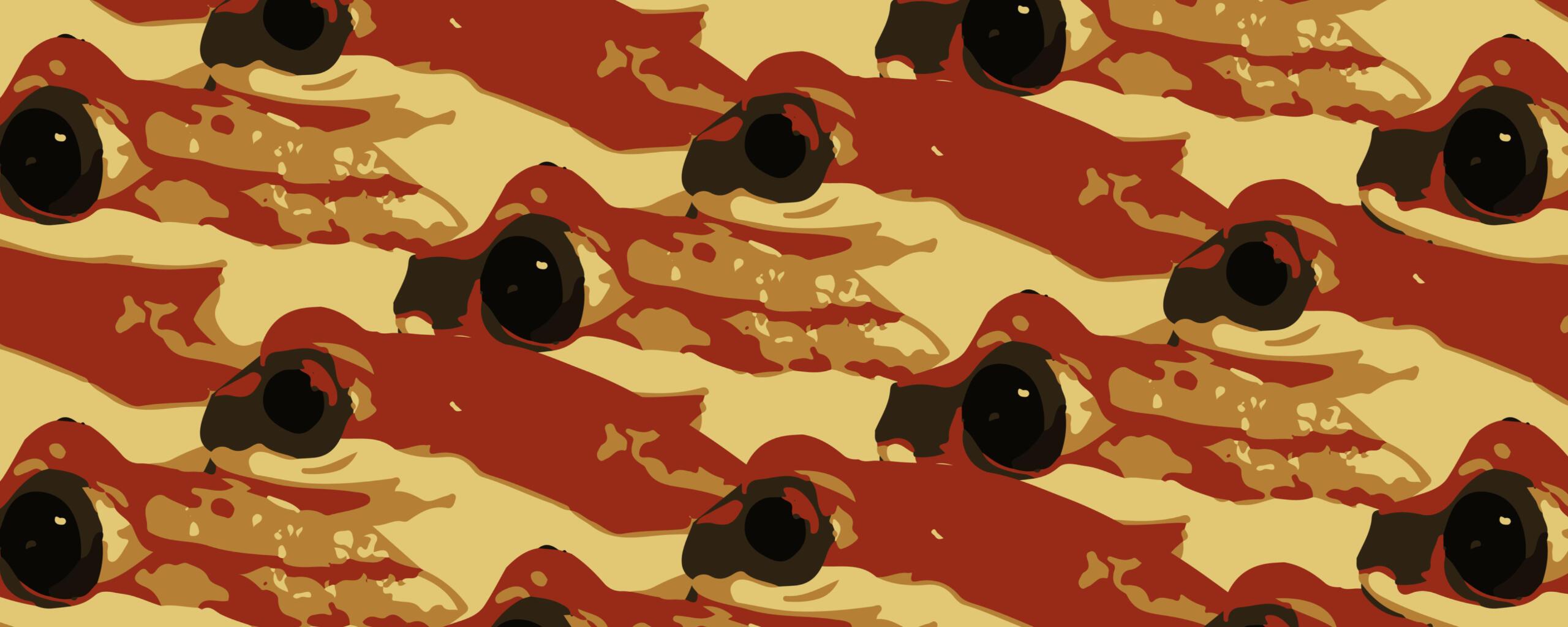
Amazonía Ecuatoriana
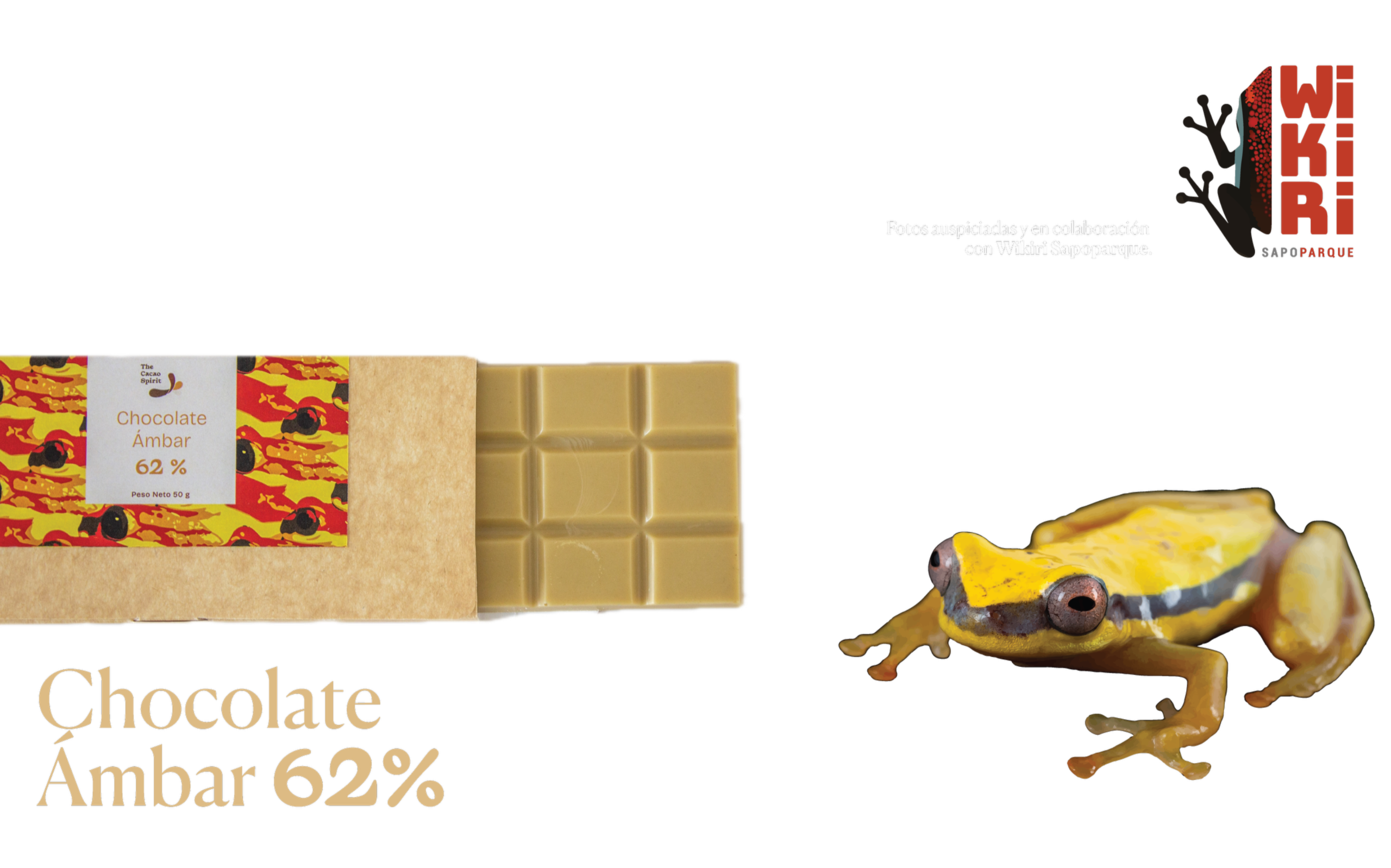
Productor: Doña María/ Francisco (Urku Muyu)
Comunidad: Varias
Bioindicador: Ranita bandeada (Dendropsophus rhodopeplus)El cacao blanco (Theobroma bicolor) o patas muyu es una especie prima del Theobroma cacao con una característica única: un grano color blanco que luego de un ligero tostado pasa a tomar un color ámbar que nos permite llegar a un chocolate único hecho en Ecuador. Una especie conservada gracias a las prácticas sostenible a través de milenios en chakras y la alta biodiversidad en la Amazonía ecuatoriana.Perfil: un sabor único dorado amazónico con notas a macadamia y neces, junto a toffee, caramel y un toque a dulce de leche.Ingredientes: cacao blanco, azúcar de caña, manteca de cacao.
With each bar, you savor the delightful aroma of cacao and the rich biodiversity that surrounds it.
In the end, we know that when a cacao tree grows in harmony with biodiversity, the product is much more than just a raw material: it is a reflection of a healthy ecosystem and sustainable production.Thus, we remind you that protecting biodiversity also means savoring the world with more awareness.Find our chocolates in the Wikiri Sapoparque Bioshop to support the research and conservation of amphibians in Ecuador.
